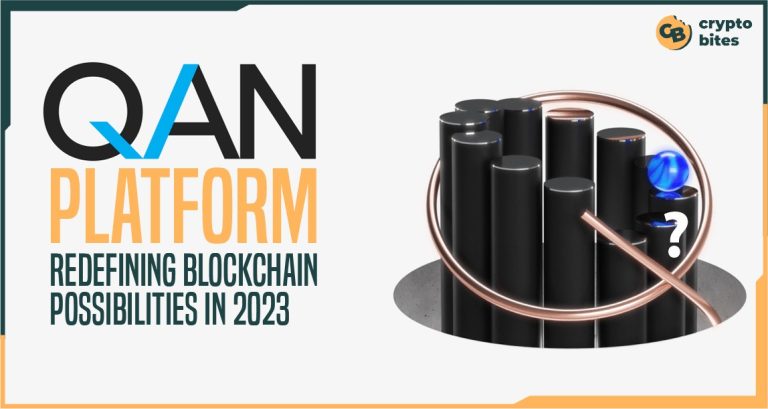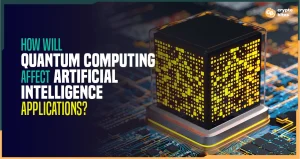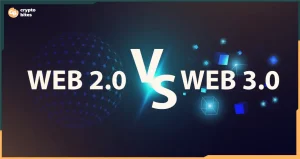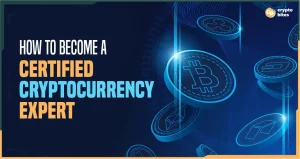
QANplatform: Redefining Blockchain Possibilities in 2023
Get ready for a groundbreaking breakthrough in the blockchain universe! Meet QANplatform—where innovation meets ironclad security and a developer’s dream come true.
In the ever-evolving landscape of blockchain technology, QANplatform emerges as a beacon of innovation and security, poised to redefine the idea of smart contracts and safeguarding them against the impending threat of quantum computing.
Join us as we delve into the unique features that set QANplatform apart in the vast landscape of possibilities.
What is QANplatform?
QANplatform is a special type of quantum-resistant hybrid blockchain platform. It is built like a fortress and is designed to laugh in the face at quantum attacks. It also goes by the name of “QAN Blockchain Platform.”
Being the first Hyperpolyglot Smart Contract, it is compatible with any programming language.
The QANplatform project started in 2019 with the collaboration of the Chief Technology Officer (CTO), Johann Polecsak, who is also an economist. The project involves a team of over thirty members from more than ten different countries.
And this is one of the best parts about QAN: you can find information about the team members who are working on it. These are not avatars or anonymous individuals running some shady organization, a common trend within the crypto industry. This exceptionally increases the platform’s transparency and authenticity.
QAN allows both businesses and developers to do a number of things. For instance, they can create apps for finance like Dapp, DeFi, CBDC, Metaverse, NFT, and so on.
According to CoinBase, here is the market status of QANplatfrom over the past year,
Overview of the Technologies Used
QANplatform integrates business processes and blockchain in an eco-friendly way without using much energy. Users who let their computers work as nodes and those who create certain types of computer programs on the platform can earn rewards.
According to a report by BuiltWith, there are approximately 36 technologies behind the development and operation of QANplatform. To function, the platform follows the same standard as Ethereum, which revolves around running intelligent contracts based on tokens.
There are 4 intellectual properties behind the development of QANplatform. The 4 properties are the innovative creations of the QAN team. Without further ado, let’s see what these properties are about.
1. Quantum Resistant Security
Quantum computer attacks pose a danger to blockchain technology due to their ability to break the cryptographic foundations that secure blockchain systems. Blockchain relies on cryptography for data security and transaction integrity, with algorithms like RSA and ECC being widely used. Quantum computers, using algorithms like Shor’s algorithm, can efficiently solve problems that classical computers struggle with, such as factoring large numbers. This could allow them to derive private keys from public addresses on the blockchain, leading to unauthorized access, transaction forgery, and potential manipulation of the blockchain’s history. now explain how QAN is good
In the face of this emerging threat, QANplatform stands out as a trailblazer in quantum-resistant security with its integration of the Lattice-based algorithm. QANplatform remains immune to attacks from quantum computers since they lack the capacity to efficiently solve lattice-based problems.
Moreover, the adoption of the well-established CRYSTALS-Dilithium technology further exemplifies QAN’s commitment to strong security. CRYSTALS-Dilithium is an advanced post-quantum cryptographic scheme approved by the National Institute of Standards and Technology (NIST). By combining this method with the Lattice-based algorithm, QANplatform creates multiple layers of protection, reinforcing its defenses against potential quantum threats.
2. Quick Deployment on Cloud Platforms
The process of setting up QAN on different cloud platforms is pretty fast as well. You will be surprised to know that you can set up a private QAN blockchain on big cloud platforms like Amazon AWS in just under 5 minutes. This makes QANplatform one of the fastest blockchains to get started with.
3. Proof-of-Randomness Algorithm
The QANplatform stands out with its innovative Proof-of-Randomness (PoR) algorithm, setting it apart in the blockchain landscape. This cutting-edge algorithm not only ensures a high level of eco-friendliness within the market but also significantly minimizes its carbon footprint. By consuming less electrical energy, QAN blockchain substantially reduces carbon emissions, aligning technology with environmental sustainability.
Furthermore, PoR maintains a decentralized and democratic approach, fostering a distributed control structure that involves a multitude of participants rather than being monopolized by a single entity. This distinct combination of eco-consciousness and inclusivity solidifies QANplatform’s position as a trailblazer in both technological advancement and environmental responsibility.
4. Smart Contract Development
Smart contract development takes on a whole new meaning with QANplatform. They’ve come up with a special way that lets a whopping 20 million programmers join in. These programmers can write their code using whichever programming language they’re comfortable with. It’s like giving everyone a seat at the table and speaking their language when it comes to building smart contracts.
As I have said earlier, QANplatform works by using a method called Proof-of-Randomness (PoR), which doesn’t require a lot of computing work. At the same time, this method is good for the work environment. It can handle a lot of users at once with less energy. As a result, it can facilitate faster transactions. Using cryptography methods, the platform keeps information secure. Its security is so strong that even powerful quantum computers can’t attack it.
Why Should You Use QANplatform?
As I said earlier, QANplatform is a special blockchain system that’s designed to resist attacks from powerful quantum computers. This means the things you build on it can stay secure even if quantum computers become a threat. These things may include smart contracts, apps, digital money, and more. This is why using QANplatform can be really helpful.
What is great is that there are no restrictions on using specific programming languages. You can utilize your favorite programming language to build things on QANplatform. The platform makes it easy by working with many popular programming languages. Also, it is compatible with common technologies like Docker, Kubernetes, and big cloud platforms like Amazon AWS and Microsoft Azure.
If you are already using Ethereum for your projects, you will find it easy to switch to QANplatform. Since the platform is built on similar technology, things like decentralized exchanges (DEXes), unique digital items (NFTs), and financial apps can move over without any hassle.
The best part is that QANplatform gives rewards to the people who build things on it. So, if others use your code for their projects, you will keep getting rewards. Even if you are using just a mobile phone or a small computer like a Raspberry Pi, you can secure the QANplatform by being a validator. As a result, you can ensure everything runs smoothly while using very little energy and hardware.
Why Does QANplatform Stand Out Among Other Platforms?
For several reasons, QANplatform stands out among other popular cryptocurrencies. Although the platform is pretty new, its market capitalization has increased to $79 million. Let’s check out the following comparison chart to learn more about how QANplatfrom differs from other platforms.
Smart Contract of QANplatform
A smart contract is like a digital agreement that runs on a blockchain. It is a way to ensure things happen automatically without the help of a middleman. Imagine you want to lend your friend some money, and you both agree that they will pay you back in a month. A smart contract could be set up to automatically send the money back to you after a month, as long as your friend has enough money.
The idea of smart contracts started a while ago, but they became popular with the Bitcoin system in 2009. Later, Ethereum came along and made smart contracts even more powerful. Ethereum lets programmers create small programs that run on its system. These programs can do things like handle money or store information. Eventually, people started building all sorts of useful things on Ethereum, like digital games and financial tools.
On the QANplatform, smart contracts work similarly to Ethereum. Programmers can write these digital agreements and run them on the platform. But what is great about QANplatform is that it is very secure, even against super-strong computers called quantum computers. It uses a special way of making decisions called Proof-of-Randomness. On top of that, it is compatible with many programming languages.
Smart contracts on QANplatform have some unique benefits, like low costs, strong security, and special rewards for developers who create them. So, QANplatform is like a smart contract playground that adds extra cool features to the regular smart contract idea.
Features of Multi-language Smart Contracts
Multi-language Smart Contracts on QANplatform have some really cool features that make them easy to use and powerful. The following are the notable features of multi-language smart contacts.
- QVM Power: QAN Virtual Machine (QVM) is like a super-smart computer inside the blockchain. It can run special programs called Smart Contracts that are written in different programming languages.
- Regular Programming: Developers don’t need to worry about tricky technical stuff when writing contracts. It is just like writing regular computer programs you use every day.
- Any Language Works: You can use almost any programming language you like to build contracts. As long as the program works on Linux, it can also work on QANplatform.
- Optimized Languages: QANplatform makes it extra easy to use specific languages. They give you special tools and guides to make sure your contracts run smoothly. In addition, they don’t charge too many fees.
- Safety Zone: Smart contract instances are kept separate and secure. Thus, they can’t mess with other parts of the system.
- Like Making Apps: Writing these contracts feels like making regular computer applications or mobile apps.
- Learning Hub: QANplatform’s team provides helpful guides and tools for certain languages. As a result, everyone can learn how to make contracts that work without flaws.
- Testing Ground: Right now, QVM is being tested as a special place where contracts can run safely. It is like a playground for smart contracts.
Withdrawal Fees, Transaction Fees, and Developer Royalty Fees of QANplatform
There are various fees associated with QANplatform. These fees were introduced for different purposes. QANplatform has these fees and rewards to make things work smoothly.
Let’s get to know the different fees of QANplatform before using it. Perhaps, you will be aware of the various regulations of the platform by learning about these fees.
First, we will begin with the
Withdrawal Fees
When you move your QANplatform coins (QARK) from one place to another, there might be a small fee. Practically, this fee will cover the cost of transferring QARK from your account to an exchange.
Transaction Fees
Think of this like a fee you pay for sending QARK to someone else. It’s like a tiny payment you make to the system to process your transaction. QANplatform sets a price range for these fees, so you can know how much it will cost in USD. This is handy for individuals and businesses because they can plan their expenses. The community even gets to vote and decide on changing the fee range.
Developer Royalty Fees (DRF)
This one is special. Imagine you’re a developer who creates smart contracts. If you make a new kind of smart contract that others use, you get rewards! Whenever your code is reused by other developers, you keep getting paid in QANplatform’s special token (QANX Token). This reward is like a gift that keeps coming. Plus, it is applicable for a very long time.
The good thing is, QANplatform’s system is smart. It only needs to update the new parts of the code when it is used again. This means that the developers who reuse the existing code pay less, like 80% less. That is because they are only paying for the new parts. This makes the platform fair and cheaper for everyone involved.
Programming Languages Supported by QANplatform
QVM can understand any language that can turn into a special kind of computer program for Linux. And guess what? The QANplatform team keeps adding more and more languages to their special list of favorites!
Currently, QANplatform supports the following languages:
- JavaScript (JS) smart contract
- Java smart contract
- Python smart contract
- TypeScript (TS) smart contract
- C smart contract
- C++ smart contract
- C# (C-Sharp) smart contract
- Golang (Go) smart contract
- Kotlin smart contract
- Rust smart contract
Private and Public Blockchain Platforms
Private and public blockchain platforms refer to two different types of distributed ledger systems. They differ in terms of their accessibility and governance. Here is an overview of each platform to know whether QANplatform belongs to a public or private blockchain:
Public Blockchain Platforms
Public blockchains are open and decentralized networks. So, anyone can join, participate in, and verify transactions on such platforms. Although they allow anyone to read and write data, they maintain transparency and immutability. Typically, public blockchains are secured by consensus mechanisms like Proof of Work (PoW) or Proof of Stake (PoS). Often, they have their own native cryptocurrencies.
Here are some examples of public blockchain platforms:
- Bitcoin: The first and most well-known cryptocurrency. It is designed for peer-to-peer digital cash transactions.
- Ethereum: A platform known for its smart contract capabilities. It enables developers to build decentralized applications (DApps) on its blockchain.
- Cardano: A platform focused on scalability, sustainability, and interoperability. It uses a unique consensus mechanism called Ouroboros.
- Polkadot: A multi-chain platform that enables different blockchains to interoperate and share information.
Since QANplatform follows the same standards as Ethereum and is an open-source platform, it is no wonder that QANplatform belongs to the public blockchain group.
Advantages of a Public Blockchain System
- Public blockchains are highly decentralized. This means no single entity has full control. So, no central authority can manipulate the system. This can lead to enhanced transparency and trust.
- Anyone can join and participate in a public blockchain network. This will promote broader access and inclusion.
- All transactions on a public blockchain are visible to anyone. This transparency can foster accountability and prevent fraud.
- Public blockchains use consensus mechanisms like Proof of Work or Proof of Stake to secure the network. Hence, they are moderately resistant to attacks.
- Many public blockchains have their own native cryptocurrencies. They offer incentives for participants and facilitate value transfer within the network.
- Public blockchains are accessible from anywhere in the world. This makes them ideal for global applications and financial transactions.
Private Blockchain Platforms
These blockchains are controlled by a specific organization or group of entities. They are not open to the public and have restricted access. Typically, participants in a private blockchain are known and verified. So, these platforms are more suitable for business collaborations, where privacy and controlled access are essential. Private blockchain platforms are also known as permissioned blockchains since they have access control layers.
For QANplatform, there are no restrictions for joining. As long as you have a valid ID and willing to contribute, you can join the platform. The QAN Platform is designed for the public, not for any private purposes or confidential business interests. So, it doesn’t belong to a private blockchain network.
Some examples of private blockchain platforms include:
- Quorum: A permissioned blockchain platform built on Ethereum, which is mainly designed for the financial industry. Privacy and confidentiality are paramount on this platform.
- Hyperledger Fabric: An open-source framework hosted by the Linux Foundation. It is designed for enterprise use cases, such as supply chain management and financial services.
- Corda: Another open-source blockchain platform developed for enterprise use. It focuses on facilitating legal agreements and financial transactions.
Advantages of a Private Blockchain System
- Private blockchains offer enhanced privacy since access is restricted to known participants. As a result, these are suitable for sensitive business operations since transactions can be kept confidential.
- Organizations have control over who can join and participate in a private blockchain. This allows for more defined and managed participation.
- Private blockchains may not require the extensive computational resources needed for securing public blockchains. Hence, they can be more cost-effective.
Conclusion
As we delve into the complexity of the QANplatform, one thing is abundantly clear: this is not just another blockchain. It is a dynamic combination of cutting-edge technology, developer empowerment, and uncompromising security.
Through QANplatform, developers, enterprises, and enthusiasts join hands in shaping the digital landscape of tomorrow. Despite who you are or what you do, keep an eye on QANplatform.





The token is Qanx, not Qark.
It was named Qark back in 2019, but the project decided to go back to drawing board and redesing some things. With that relaunch the token was rebranded as Qanx.
Thank you Antti, we have removed this section to help keep the content accurate. Appreciate the feedback and contribution!